
Viking Names
Krok
Krókr, an original byname meaning ‘crook-backed’, related to Old Norse krókr ‘hook’, or possibly ‘crooked-dealer’. It is a rare and late personal name in West Scandinavia, but is more common as a byname early. The personal name is also recorded in Sweden and Denmark and is found in a Danish runic inscription as well as in several Danish place-names. Additionally, the name is probably found in Normandy. The name is common throughout the Danelaw and found in many place-names such as South Croxton and Croxton Kerrial in Leicestershire and Croxall, Staffordshire (formerly of the Repton and Gresley Hundred of Derbyshire).
Read More
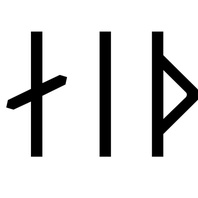
Viking Names
Hreidar
The Old Norse male personal name Hreiðarr is very common in Norway but relatively uncommon elsewhere in the Viking world. It can be found as the first element in the place-name Rearsby, Leicestershire. It also features as the name of the main character in the short tale of Hreiðarr the Foolish.
Read More
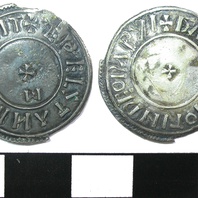
Viking Objects
Silver Penny (1914/543-1)
This silver penny of King Aethelstan, who was King of England from 927-939, was minted in Derby by the moneyer Gadierd between 937-939. It is not known where it was found. Moneyers were people who were permitted to mint money on behalf of the king. Minting coins was a way of controlling the means of exchange within a kingdom and which created a more easily administered standardized system of trade. Moreover, the coins themselves were often used as propaganda, portaying symbols and statements that gave off a desired message. The Vikings later used the minting of coins to legitimize their own rule.
Read More
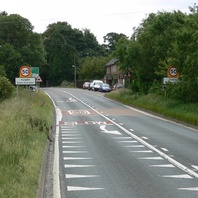
Viking Names
Tugby
Tugby, in the East Goscote Hundred of Leicestershire, is a Scandinavian compound from the Old Norse male personal name Tóki and Old Norse by ‘a farmstead, a village’. In the Domesday Book, a Tochi is recorded as holding Tugby as part of a larger estate. It is now a joint parish with Keythorpe.
Read More
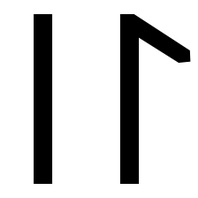
Viking Names
Spillir
Spillir is a relatively rare male name which is found as the first element in the place-name Spilsby, Lincolnshire. The name possibly derives from the Old Norse word spillir ‘spoiler, breaker’.
Read More
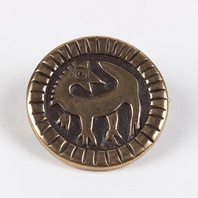
Viking Objects
Reproduction Brooch with Backwards-Facing Beast
A reproduction of a copper alloy disc brooch featuring a backwards-facing beast motif. This style of brooch would have been an everyday item rather than a high status one. For more information on Scandinavian jewellery in England check out our blog: Brooches, Pendants and Pins: Scandinavian Dress Accessories in England.
Read More

Viking Objects
Coin of Cnut the Great (NARC-9AE391)
This silver Helmet IIIc Type penny was minted for King Cnut of England by the moneyer Eadwine in Thetford. The obverse displays + CNUT RECXA with a figure wearing a pointed helmet. The reverse displays + EDPINE ON DEOD and a voided short cross. Minting coins was a way of controlling the means of exchange within a kingdom and which created a more easily administered standardized system of trade. Moreover, the coins themselves were often used as propaganda, portaying symbols and statements that gave off a desired message. The Vikings later used the minting of coins to legitimize their own rule.
Read More
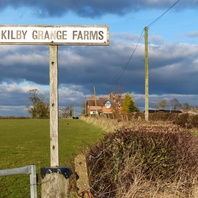
Viking Names
Kilby
Kilby, in the Guthlaxton Hundred of Leicestershire, was probably an Old English compound from Old English cild (cilda genitive plural) ‘a child, a young person, a boy, a son (usually implying noble birth)’ and Old English tun ‘an enclosure; a farmstead; a village; an estate’. The place-name underwent Scandinavianization with the generic tun being replaced with Old Norse by ‘a farmstead, a village’ and the use of an initial Old Norse k for the Old English initial ch.
Read More

Viking Names
Knipton
Knipton, in the Framland Hundred of Leicestershire, is a Anglo-Scandinavian hybrid from Old Norse gnípa ‘a steep rock or peak’ and Old English tun ‘an enclosure; a farmstead; a village; an estate’. The name is topographically appropriate as the village lies in a narrow valley with hills rising steeply on each side. Pagan Anglian burials here suggest an earlier Old English place-name that was replaced with Scandinavian settlement.
Read More

Viking Objects
Reproduction Shears
Shears were a common agricultural implement generally used to cut the wool off sheep but could also have been used as scissors in textile production. These are based on a number of originals uncovered during the excavations at Flixborough, Lincolnshire.
